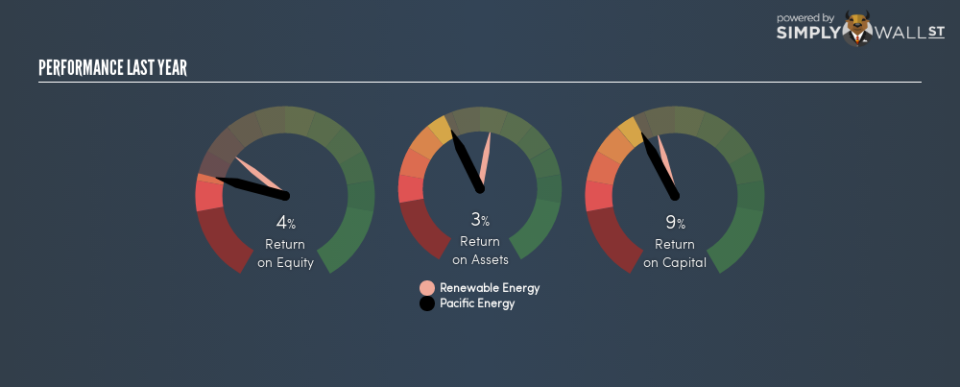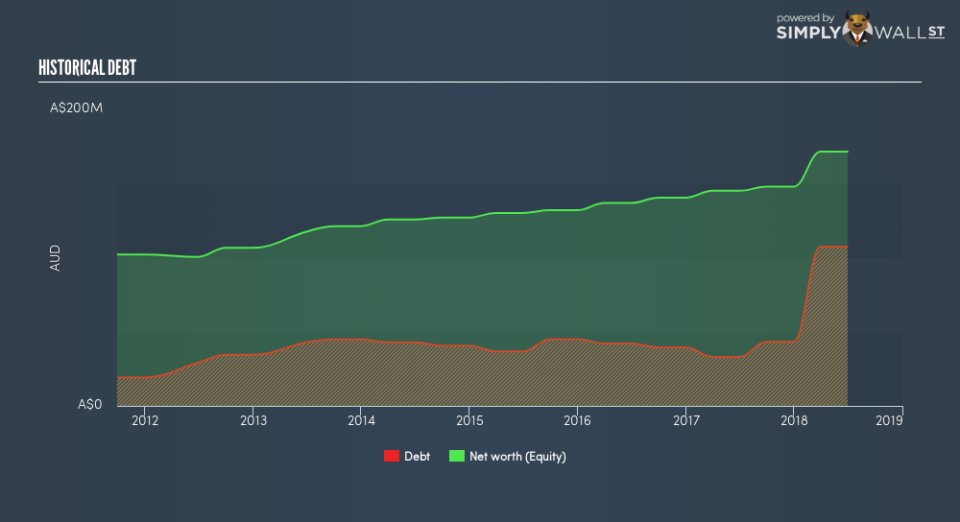What You Must Know About Pacific Energy Limited’s (ASX:PEA) Return on Equity

This analysis is intended to introduce important early concepts to people who are starting to invest and want to start learning about core concepts of fundamental analysis on practical examples from today’s market.
Pacific Energy Limited (ASX:PEA) generated a below-average return on equity of 4.0% in the past 12 months, while its industry returned 7.7%. Though PEA’s recent performance is underwhelming, it is useful to understand what ROE is made up of and how it should be interpreted. Knowing these components can change your views on PEA’s below-average returns. Metrics such as financial leverage can impact the level of ROE which in turn can affect the sustainability of PEA’s returns. Let me show you what I mean by this.
View our latest analysis for Pacific Energy
Breaking down ROE — the mother of all ratios
Return on Equity (ROE) weighs Pacific Energy’s profit against the level of its shareholders’ equity. For example, if the company invests A$1 in the form of equity, it will generate A$0.040 in earnings from this. Generally speaking, a higher ROE is preferred; however, there are other factors we must also consider before making any conclusions.
Return on Equity = Net Profit ÷ Shareholders Equity
Returns are usually compared to costs to measure the efficiency of capital. Pacific Energy’s cost of equity is 8.6%. Given a discrepancy of -4.6% between return and cost, this indicated that Pacific Energy may be paying more for its capital than what it’s generating in return. ROE can be broken down into three different ratios: net profit margin, asset turnover, and financial leverage. This is called the Dupont Formula:
Dupont Formula
ROE = profit margin × asset turnover × financial leverage
ROE = (annual net profit ÷ sales) × (sales ÷ assets) × (assets ÷ shareholders’ equity)
ROE = annual net profit ÷ shareholders’ equity
Essentially, profit margin shows how much money the company makes after paying for all its expenses. Asset turnover reveals how much revenue can be generated from Pacific Energy’s asset base. And finally, financial leverage is simply how much of assets are funded by equity, which exhibits how sustainable the company’s capital structure is. Since ROE can be inflated by excessive debt, we need to examine Pacific Energy’s debt-to-equity level. The debt-to-equity ratio currently stands at a sensible 62.7%, meaning the ROE is a result of its capacity to produce profit growth without a huge debt burden.
Next Steps:
While ROE is a relatively simple calculation, it can be broken down into different ratios, each telling a different story about the strengths and weaknesses of a company. Pacific Energy’s ROE is underwhelming relative to the industry average, and its returns were also not strong enough to cover its own cost of equity. Although, its appropriate level of leverage means investors can be more confident in the sustainability of Pacific Energy’s return with a possible increase should the company decide to increase its debt levels. Although ROE can be a useful metric, it is only a small part of diligent research.
For Pacific Energy, I’ve compiled three key factors you should further examine:
Financial Health: Does it have a healthy balance sheet? Take a look at our free balance sheet analysis with six simple checks on key factors like leverage and risk.
Valuation: What is Pacific Energy worth today? Is the stock undervalued, even when its growth outlook is factored into its intrinsic value? The intrinsic value infographic in our free research report helps visualize whether Pacific Energy is currently mispriced by the market.
Other High-Growth Alternatives : Are there other high-growth stocks you could be holding instead of Pacific Energy? Explore our interactive list of stocks with large growth potential to get an idea of what else is out there you may be missing!
To help readers see past the short term volatility of the financial market, we aim to bring you a long-term focused research analysis purely driven by fundamental data. Note that our analysis does not factor in the latest price-sensitive company announcements.
The author is an independent contributor and at the time of publication had no position in the stocks mentioned. For errors that warrant correction please contact the editor at editorial-team@simplywallst.com.

 Yahoo Finance
Yahoo Finance 

